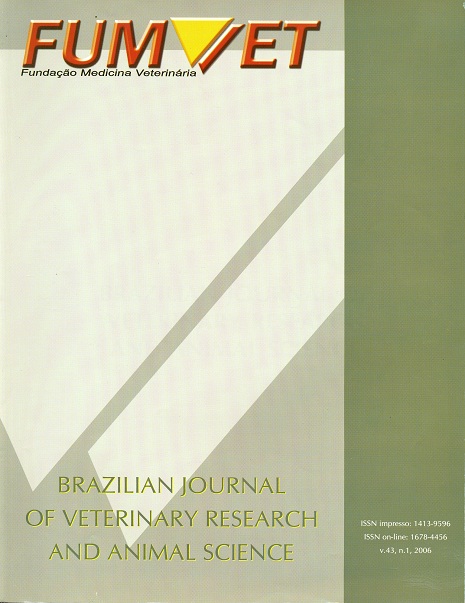The hepatic-portal vein in rabbits of White New Zeland bredd (Oryctolagus cuniculus Linnaeus, 1758)
DOI:
https://doi.org/10.11606/issn.1678-4456.bjvras.2006.26522Keywords:
Anatomy, Rabbits, Intestine, Portal veinAbstract
Considering the shortage of information in the literature, it is looked for to draw a profile of formation of the portal vein in twenty rabbits, to recognize the distribution pattern, looking for evidences of possible correlation between the formation patterns and the distribution of the portal vein. The animals were injected by Neoprene latex, fixed in formalin 10% and dissected. The hepatic-portal vein, in it extraparenquimal trajectory, was constituted, for the junction of the cranial and caudal mesenteric veins and receives veins from the stomach, spleen and pancreas. The cranial mesenteric vein receives, in all cases, a jejunal and an ileocecocolic trunk. The jejunal trunk was formed by the junction from eight to eighteen jejunal veins. The ileocecocolic trunk was formed by the encounter of the colic, cecals and ileal veins, in different arranjements and numbers. The caudal mesenteric vein was formed by junction of the rectal and left colic veins.Downloads
Download data is not yet available.
Downloads
Published
2006-02-01
Issue
Section
UNDEFINIED
License
The journal content is authorized under the Creative Commons BY-NC-SA license (summary of the license: https://
How to Cite
1.
Birck AJ, Miglino MA, Machado GV, Santos TC dos. The hepatic-portal vein in rabbits of White New Zeland bredd (Oryctolagus cuniculus Linnaeus, 1758). Braz. J. Vet. Res. Anim. Sci. [Internet]. 2006 Feb. 1 [cited 2024 Jul. 26];43(1):87-94. Available from: https://www.revistas.usp.br/bjvras/article/view/26522





